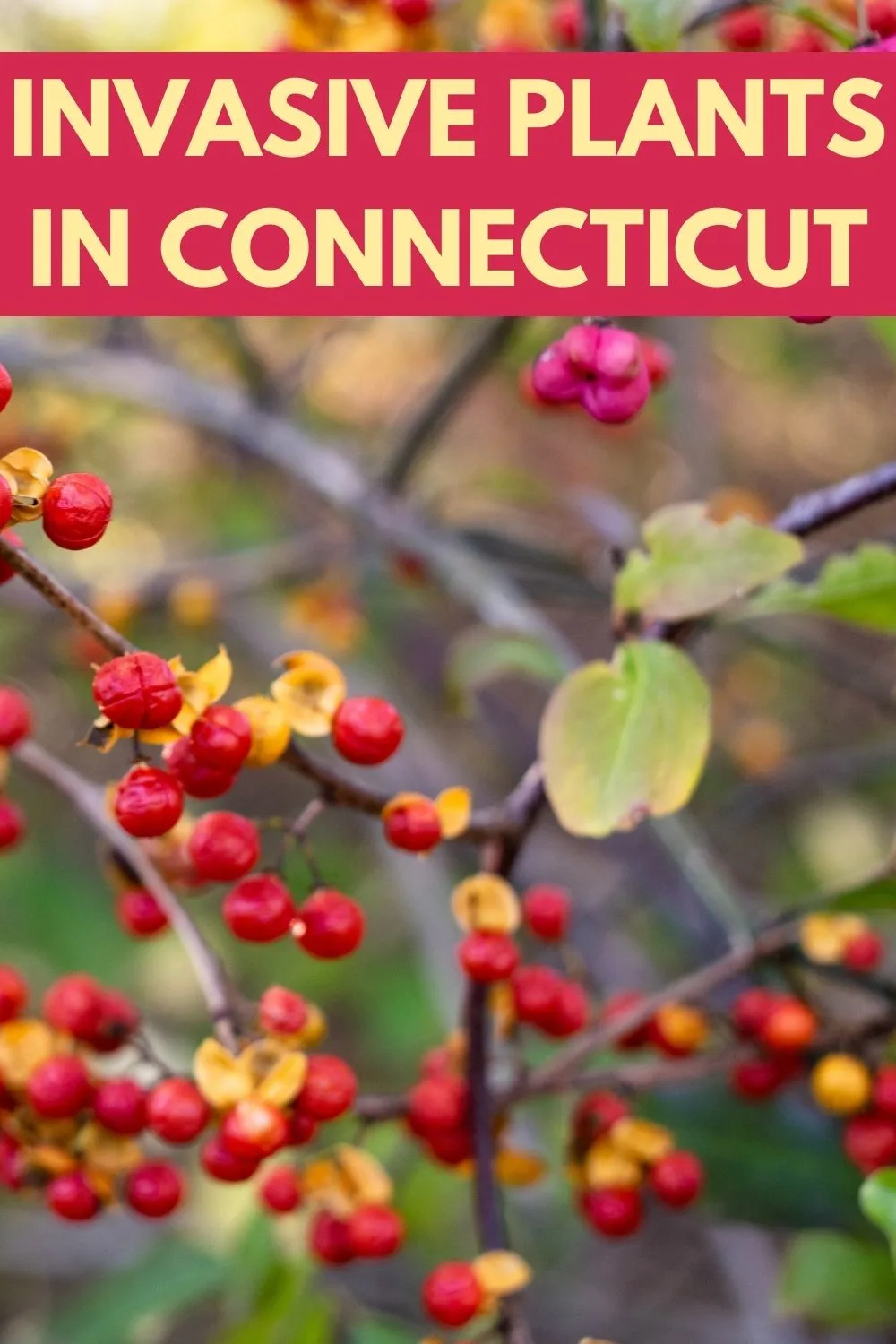With nearly a hundred aggressively spreading, nonnative plants degrading ecosystems in a single state, it can be easy to feel overwhelmed. To make things a bit more manageable, we have compiled a shorter list of some of the most common and worst invasive plants in Connecticut to help you identify and remove any invasives in your garden, as well as beautiful native alternatives to replace them with.
Invasive Plants in Connecticut
The Connecticut Invasive Plant Working Group lists 97 invasive and potentially invasive plants on their website, ranging from aquatic species to trees.
1. Autumn olive (Elaeagnus umbellata)
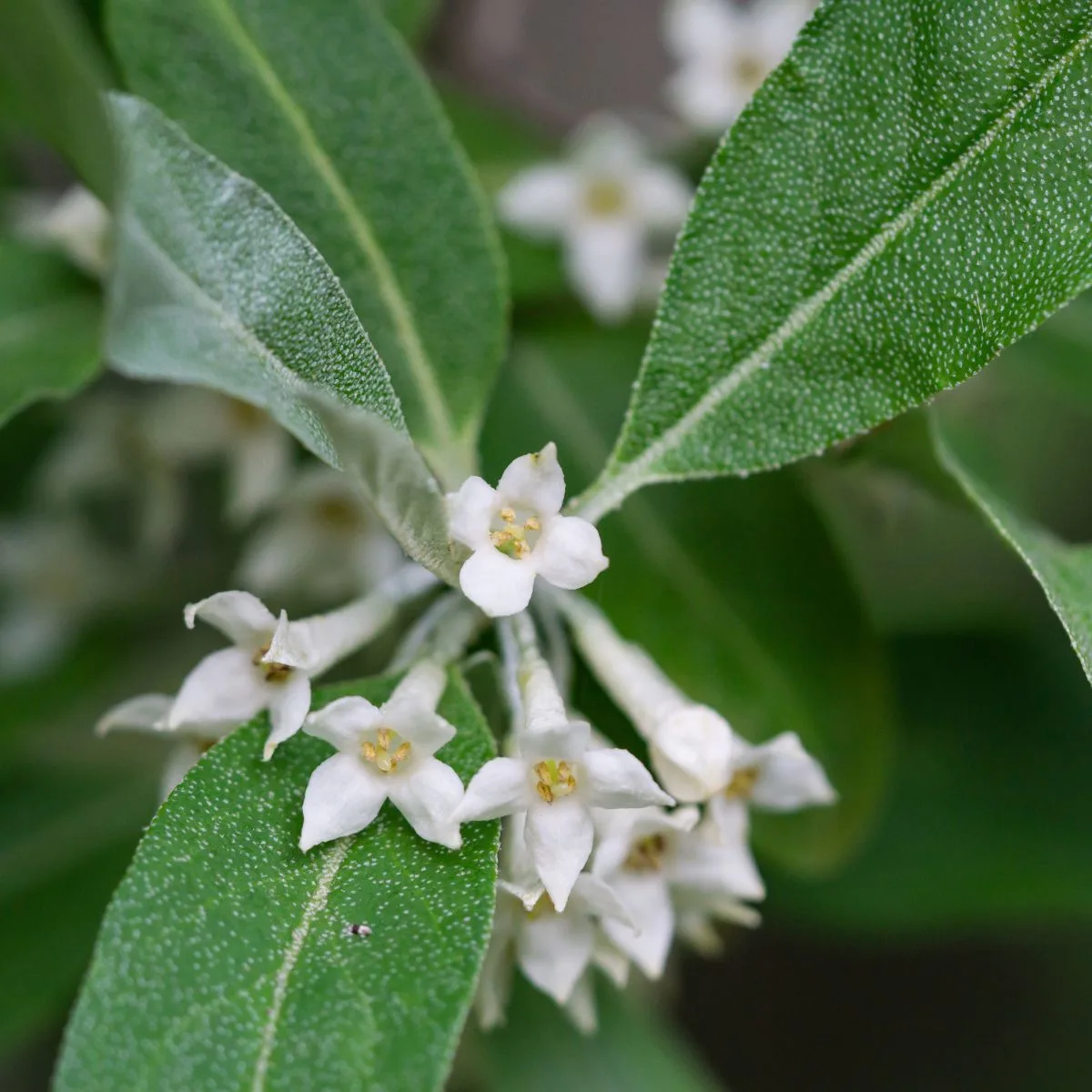
Autumn olive shrubs grow rapidly, crowding out native flora and negatively affecting local ecosystems. The simple, alternate oval leaves have silvery undersides, and small, pale yellow flowers are followed by numerous red berries with metallic dots.
Dig or hand pull young plants or cut larger shrubs. Repeated cutting or herbicide application to the stumps will likely be required. Similar native shrubs include red chokeberry (Aronia arbutifolia) and winterberry (Ilex verticillata).
2. Japanese barberry (Berberis thunbergii)
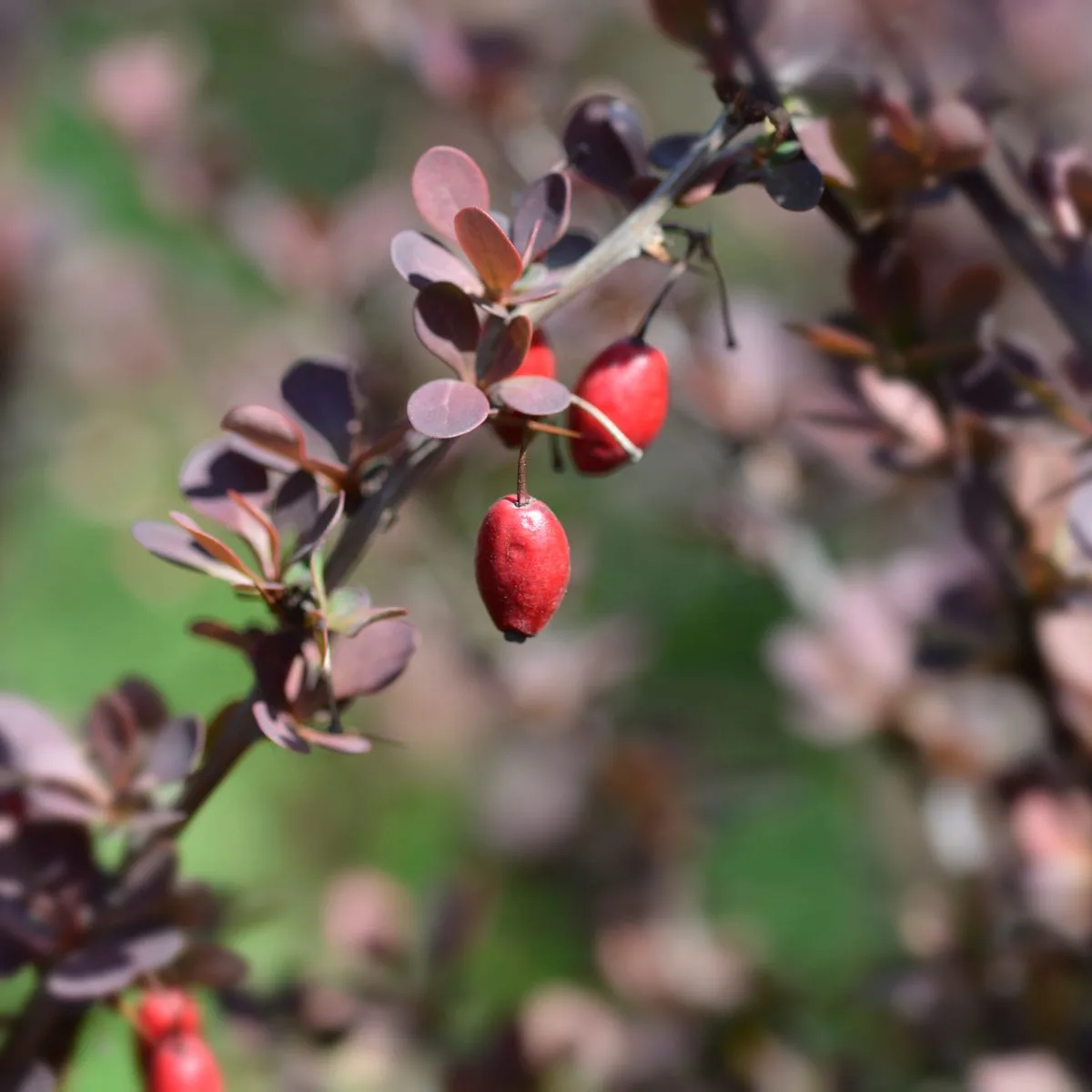
A deciduous, spiny shrub, Japanese barberry grows two to eight feet tall and forms dense stands. The brown, grooved branches zig-zag a bit and are covered in small, oval to spatula-shaped leaves in shades of blue-green, green, or dark reddish-purple. Pale yellow flowers hang the length of each stem, followed by bright red berries.
Dig or pull young plants or repeatedly cut larger specimens. Replace with the attractive native northern bayberry (Morella pensylvanica) or ink-berry (Ilex glabra).
3. Japanese and Morrow’s honeysuckle (Lonicera japonica and L. morrowii)
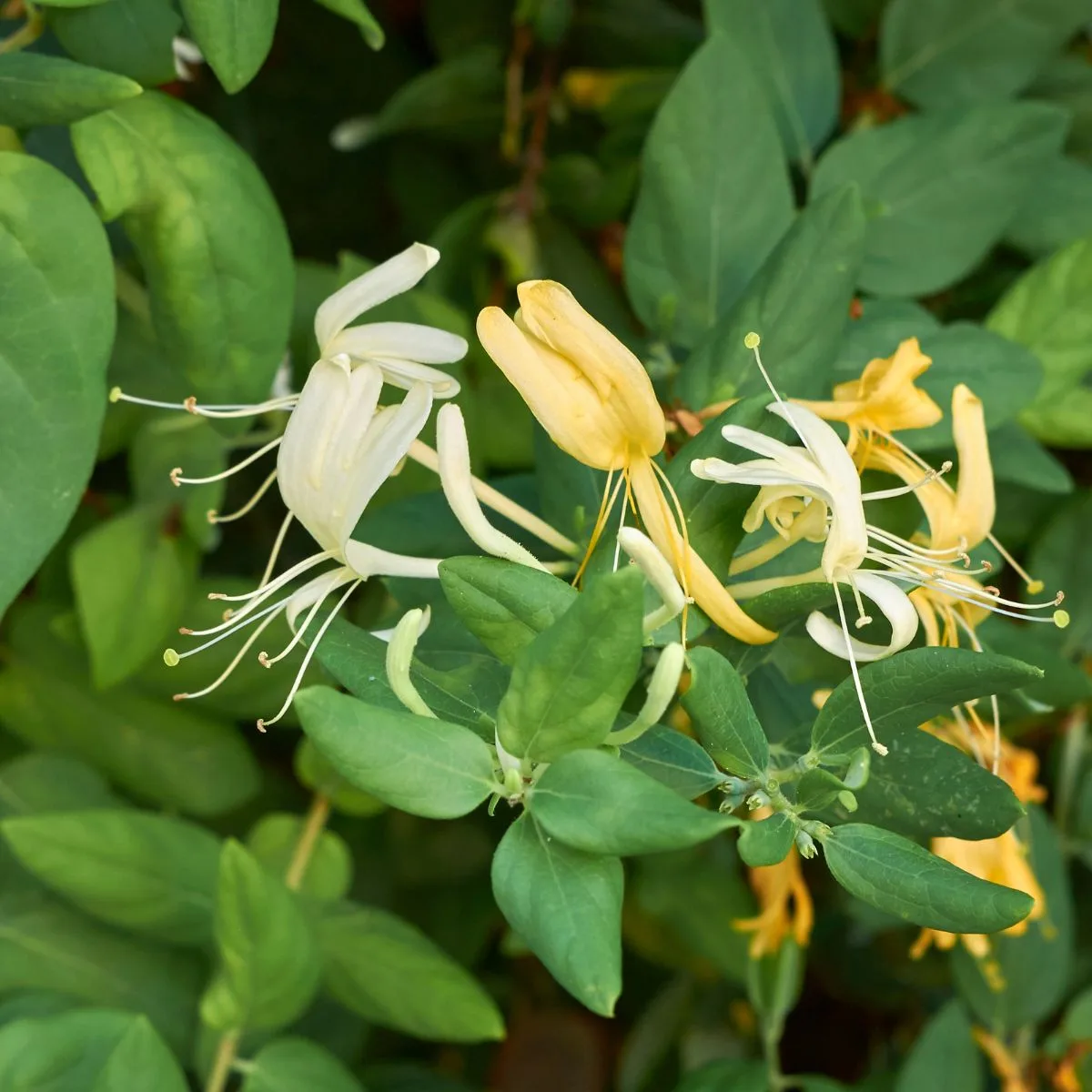
While Japanese honeysuckle is a semi-evergreen vine, Morrow’s honeysuckle is a deciduous shrub. Both have opposite, oval leaves, and pale, fragrant, tubular flowers. Japanese honeysuckle berries ripen from green to black, and Morrow’s honeysuckle berries ripen to orange.
Pull or dig, or mow twice per year to eradicate. Native honeysuckles include trumpet honeysuckle (Lonicera sempervirens) and fly honeysuckle (Lonicera canadensis).
4. Japanese knotweed (Polygonum cuspidatum)
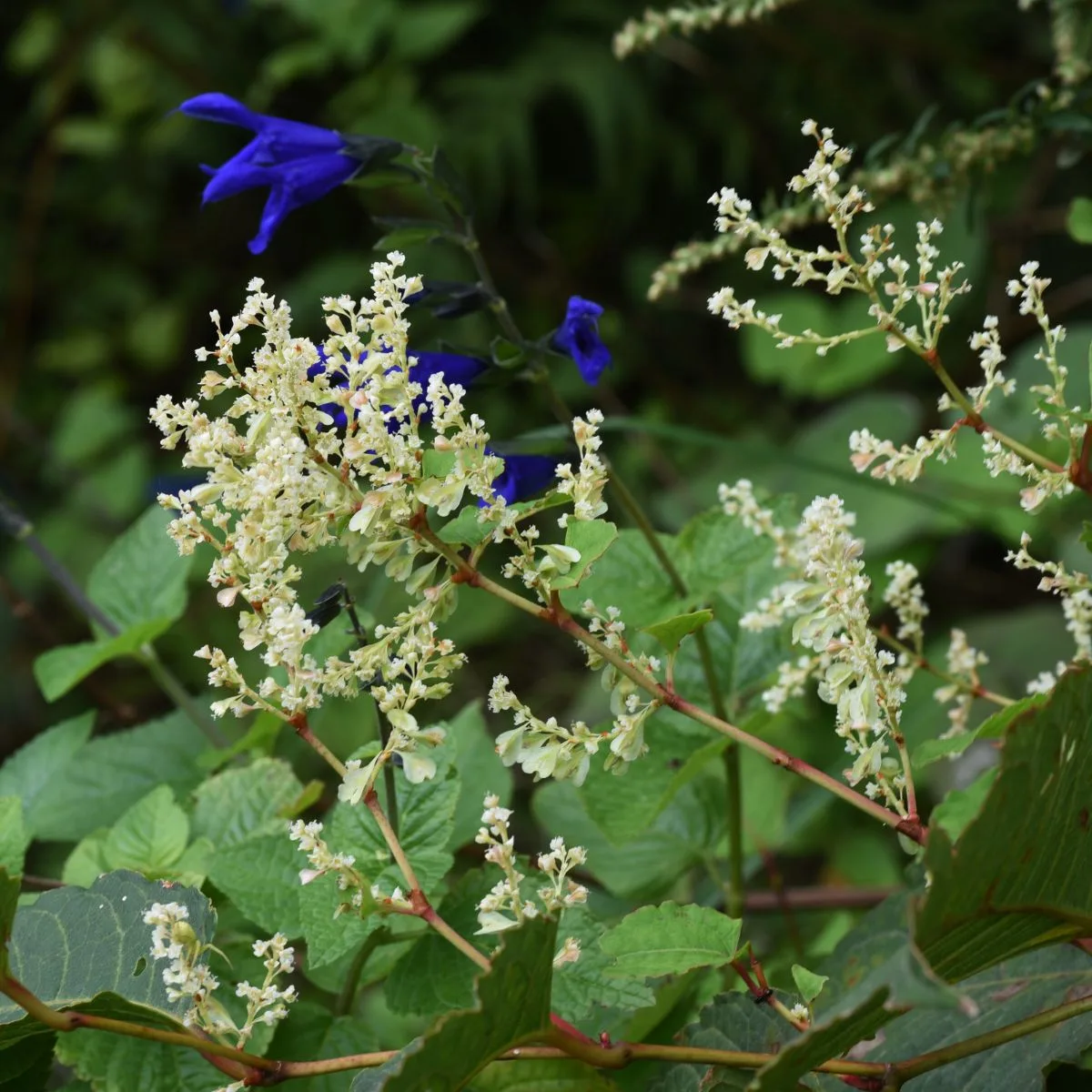
A dense shrubby perennial, Japanese knotweed grows up to 10 feet tall and invades sunny disturbed areas through the spread of rhizomes and seeds. Six-inch leaves have blunt bases and pointed tips and appear alternately on hollow, semi-woody branches. Long panicles of tiny white flowers give way to papery, winged fruits.
Cut Japanese knotweed at ground level three times during the growing season. Plant beautiful native perennials instead, like sweet Joe Pye-weed (Eupatorium purpureum) or New England aster (Aster novaeangliae).
5. Japanese stiltgrass (Microstegium vimineum)
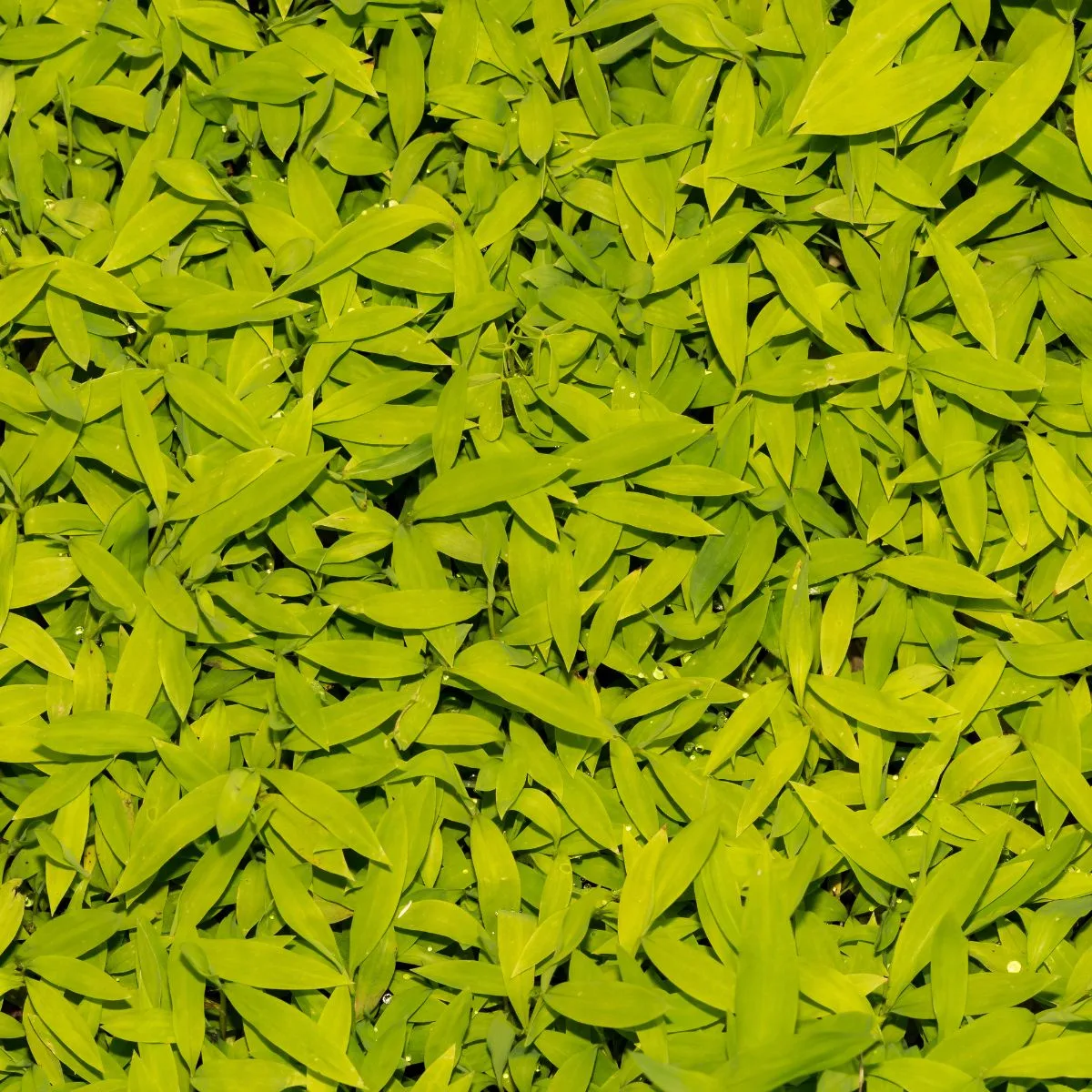
Japanese stiltgrass is an annual grass two to three-and-a-half feet tall that spreads through the rooting of stem nodes to form large patches, displacing native plants. It has lance-shaped leaves with distinctive shiny midribs.
Pull or mow before flowering. The native white grass (Leersia virginica) looks very similar, and switchgrass (Panicum virgatum) offers a taller alternative.
6. Mile-a-minute vine (Polygonum perfoliatum)
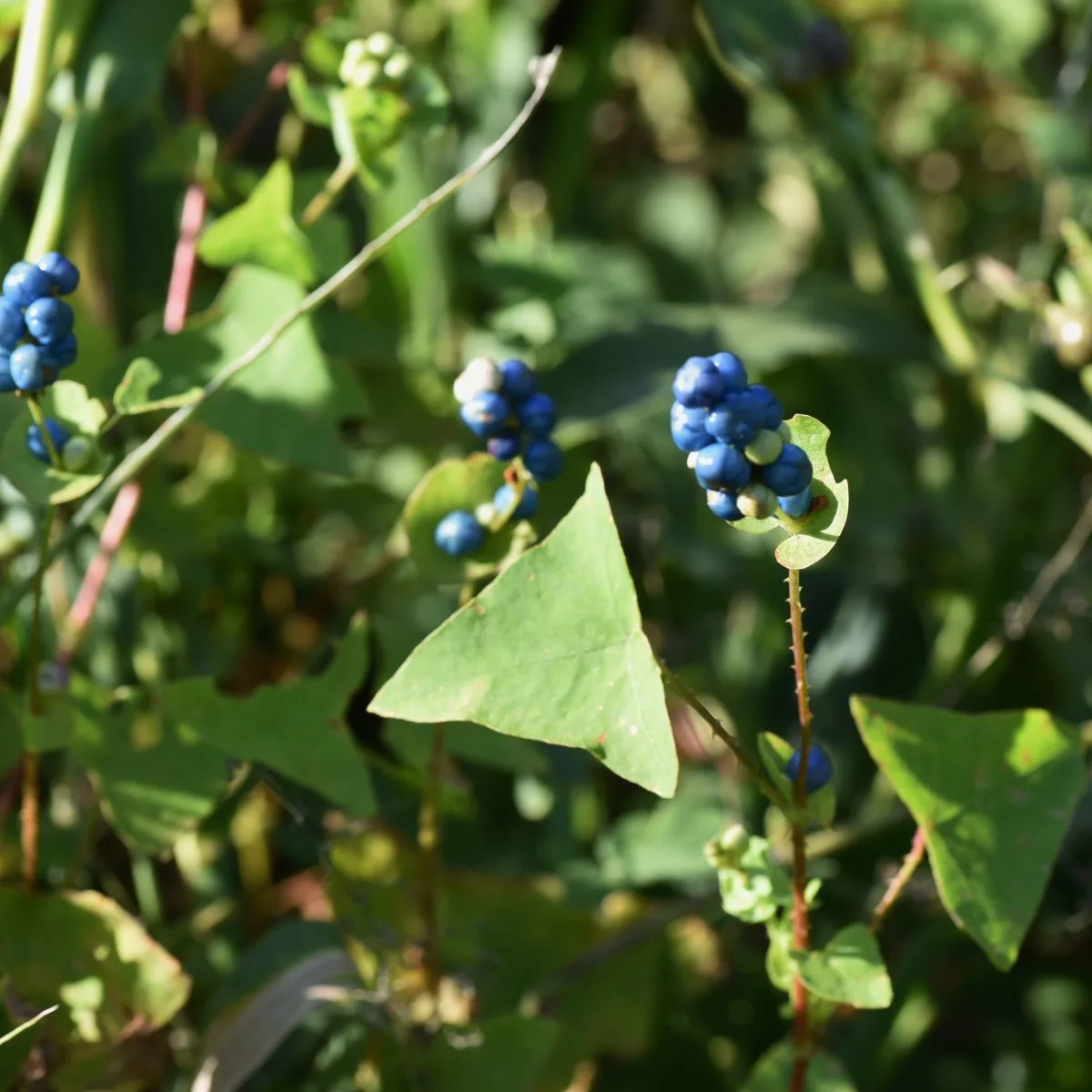
True to its name, mile-a-minute vine is a fast-growing annual that rapidly sprawls and climbs to form dense mats over other vegetation. It has distinctive triangular leaves covering delicate, reddish, spiny stems. It produces inconspicuous white flowers and metallic blue fruits.
Effective control methods include pulling before August, when the vines fruit, and repeated mowing or weed-whacking. Choose native vines instead, like climbing hempvine (Mikania scandens) or tearthumb (Polygonum arifolium).
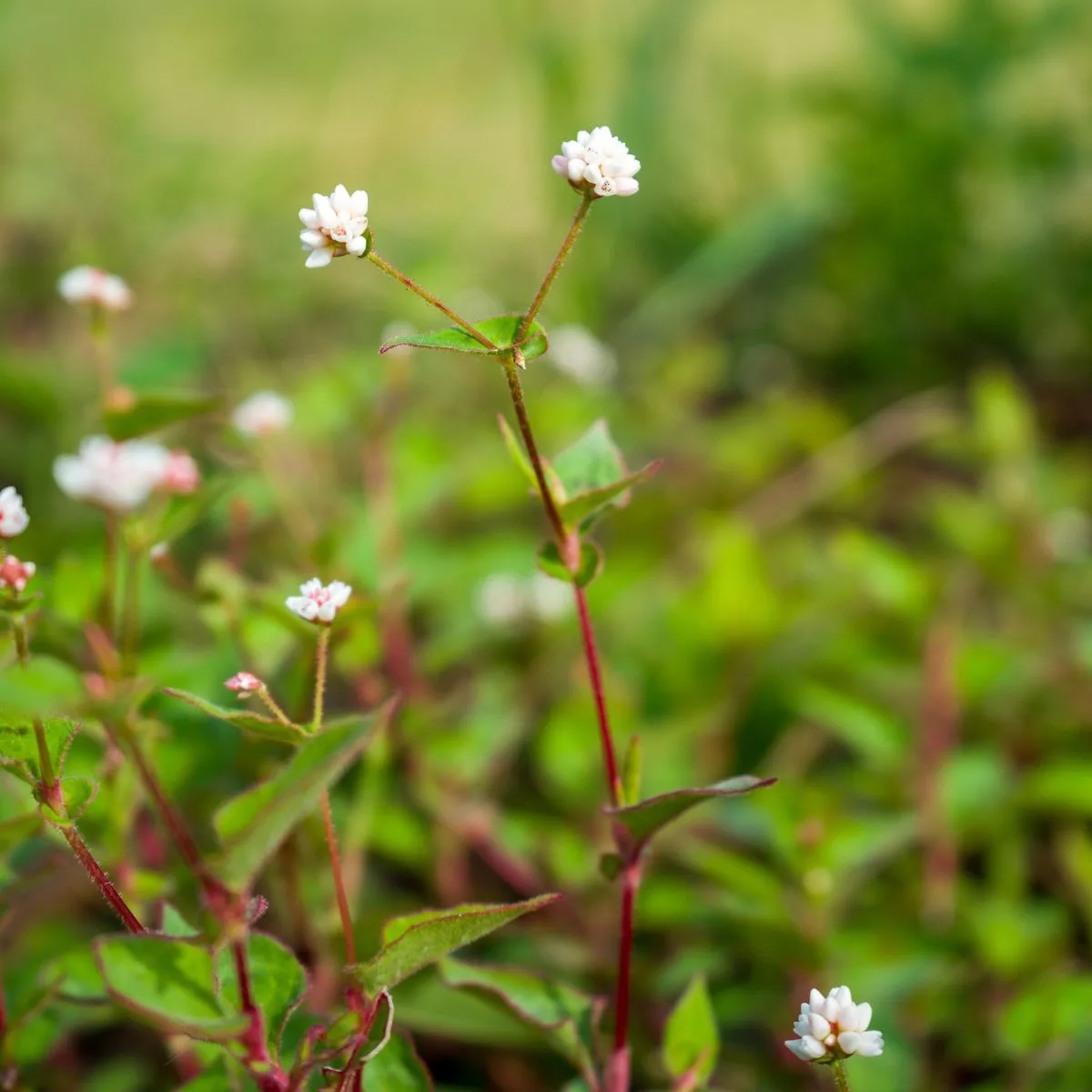
7. Multiflora rose (Rosa multiflora)
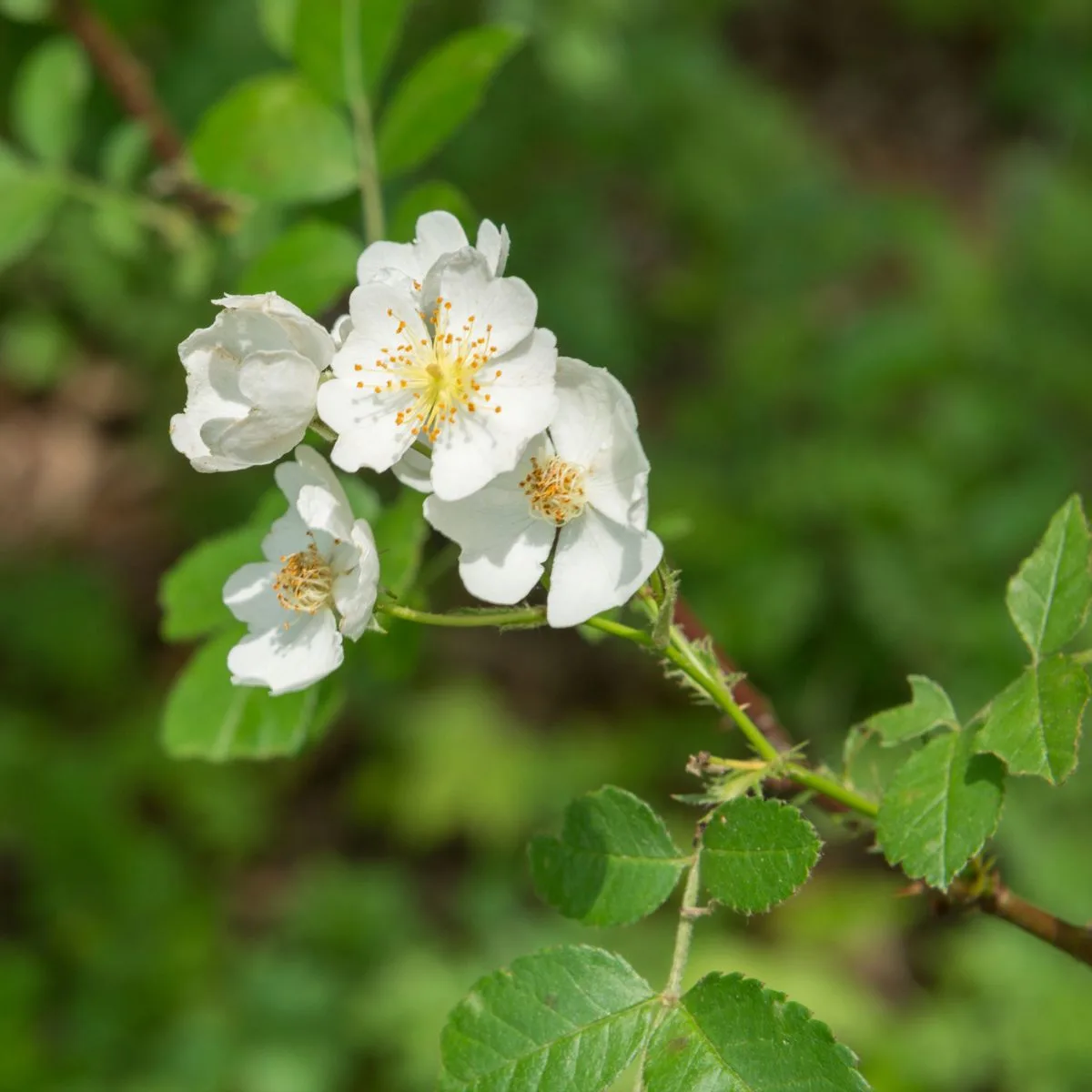
Multiflora rose forms dense, thorny thickets that restrict the movement of wildlife, livestock, and humans and displace native plants. It has distinctive fringed leaf stalks and produces clusters of small, white to pink blossoms with five petals.
Pull or dig, removing the entire root mass, or mow repeatedly for two to four years. Native roses include the lovely Carolina rose (Rosa carolina) and woods’ rose (Rosa woodsii).
8. Norway maple (Acer platanoides)
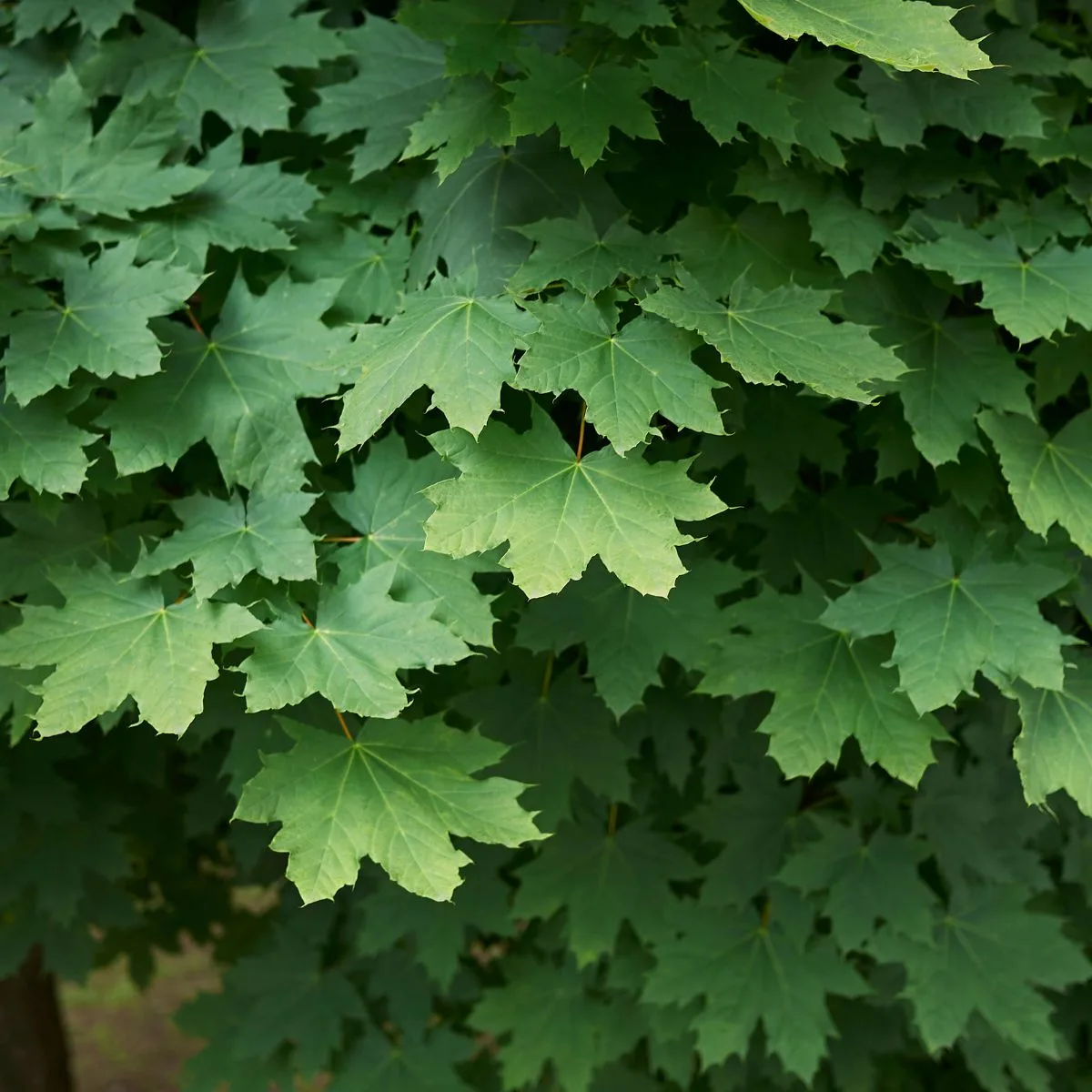
Unlike native species, Norway maple has a white, milky sap and broad leaves with hair-like tips. Additionally, the paired seeds, or samaras, have wings that jut straight out, and the foliage turns yellow in fall.
Pull or dig seedlings and cut larger trees. Red maple (A. rubrum) and sugar maple (A. saccharum) are just two of several maple trees native to Connecticut.
9. Oriental bittersweet (Celastrus orbiculatus)
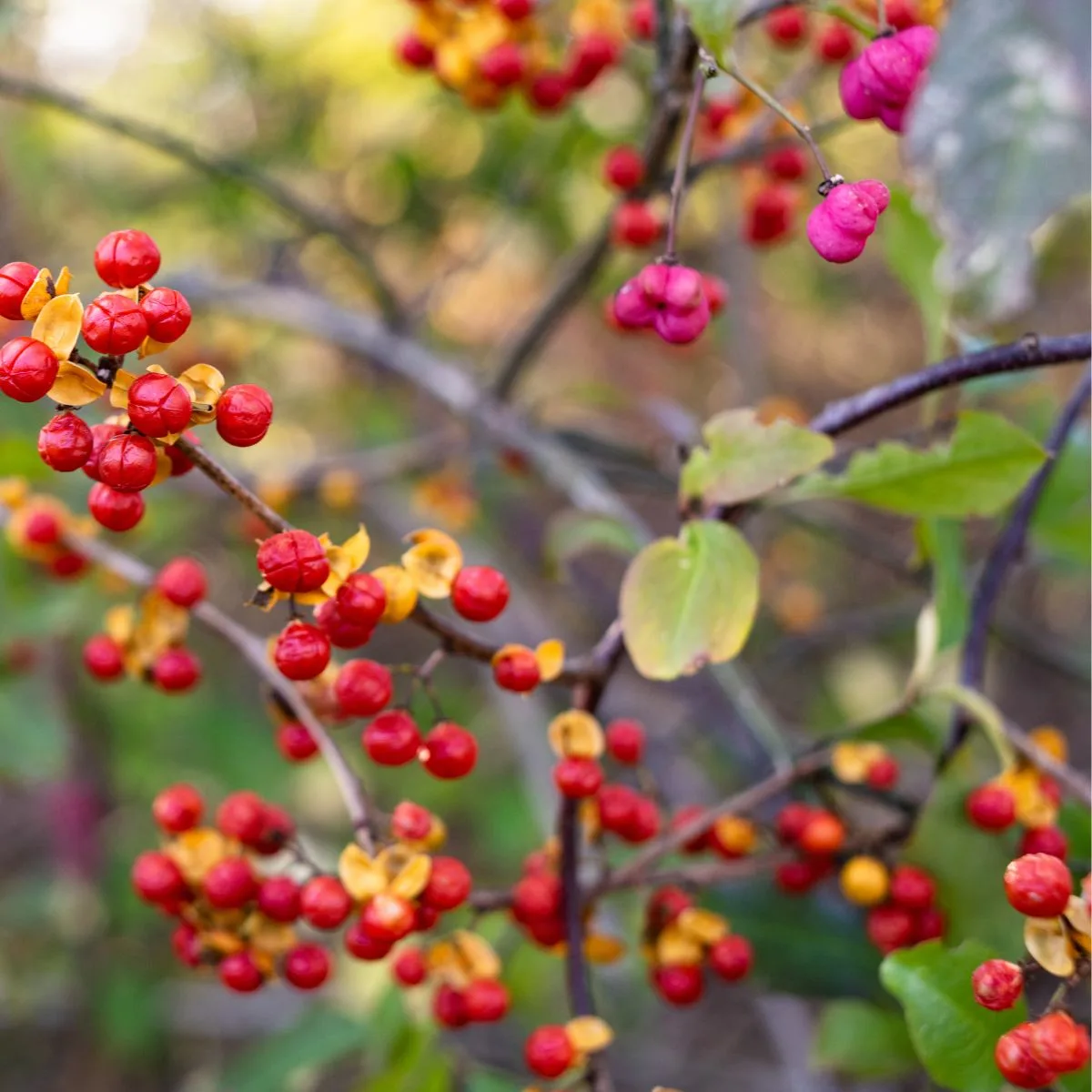
A vigorous perennial vine, oriental bittersweet smothers native plants and can even significantly damage trees with its weight. It has round, glossy, alternate leaves with finely toothed margins. Female vines produce tiny green flowers followed by globular, yellow seed capsules that split to show three reddish fruits.
Cut large vines every two weeks and pull small plants, properly disposing of any seeds. Plant American bittersweet (C. scandens), which looks very similar, or American groundnut (Apios americana) instead.
10. Porcelainberry (Ampelopsis brevipedunculata)
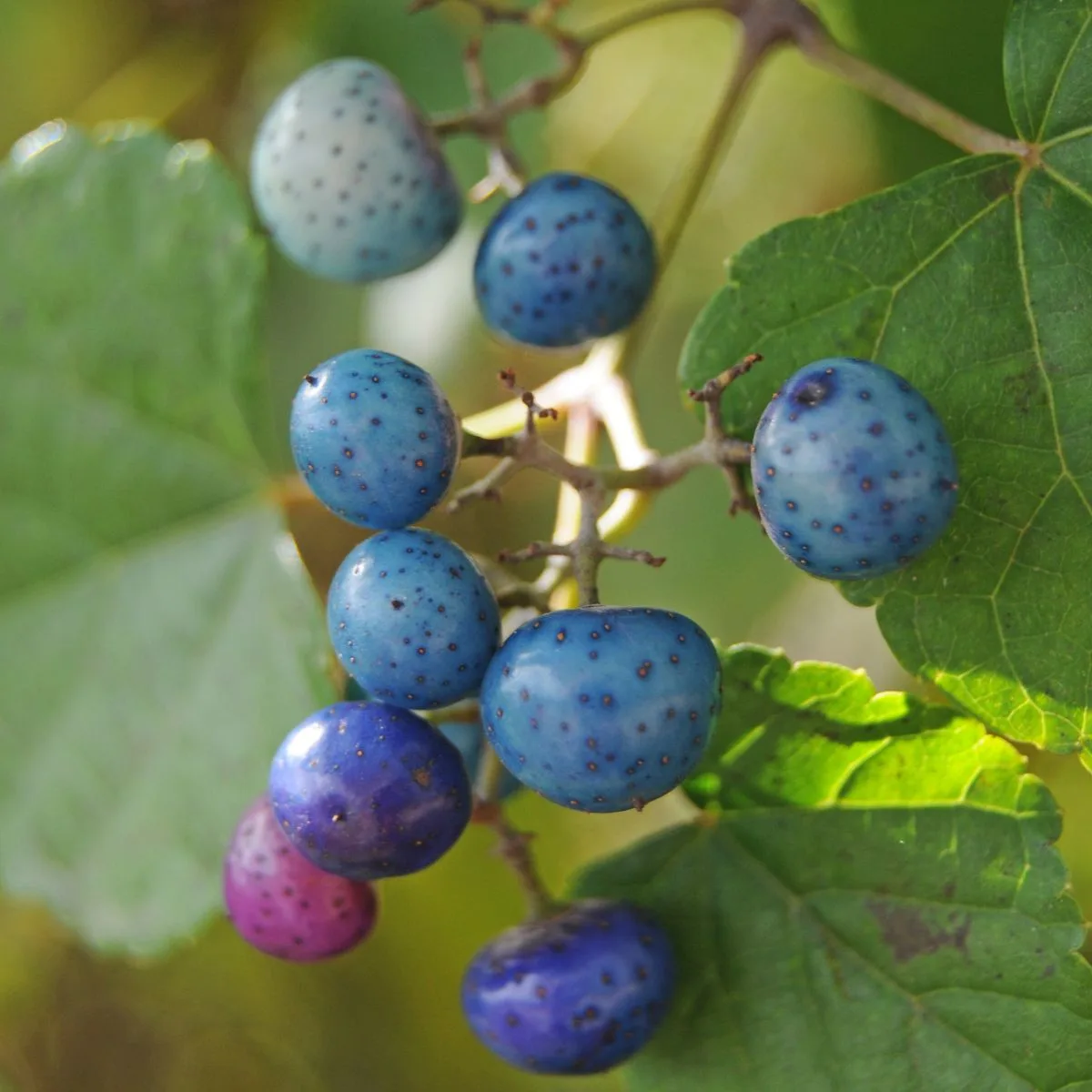
Porcelainberry spreads quickly, smothering native shrubs and other plants. This perennial woody vine climbs with tendrils appearing opposite its alternate, palmate leaves that resemble grape foliage. Unlike grapes, colorful porcelainberries (ripening from pale lilac to green, to blue) have a white pith. Additionally, the bark has lenticels and doesn’t peel.
Pull vines in the spring or fall, or cut larger vines at ground level, repeating as necessary. Replace with native fox grape (Vitis labrusca) or wild cucumber (Echinocystis lobata).
11. Winged eunonymous (Euonymus alatus)
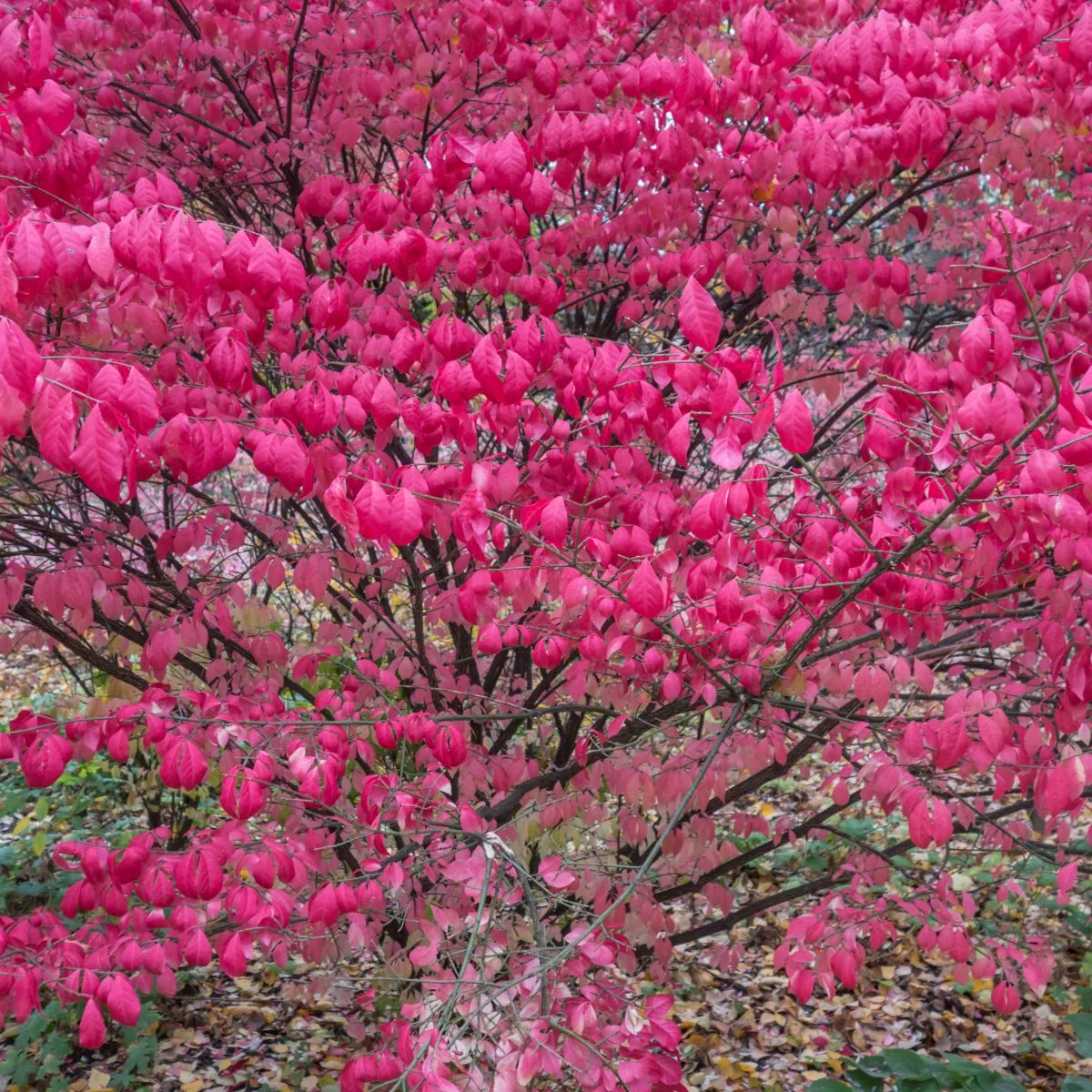
A deciduous shrub averaging six to nine feet tall, winged euonymus displaces native species with its dense thickets. Its simple, elliptical, serrated leaves are arranged oppositely on winged twigs and turn scarlet in fall. They produce showy, purple fruits that split to reveal red centers.
Control methods include repeat cutting of large shrubs and pulling or digging of smaller specimens. Choose similar native shrubs, such as sweetgum (Liquidambar styraciflua) or highbush cranberry (Viburnum triobum).
It is easy to despair over the overwhelming number of invasive plants in Connecticut. But you have just taken the first step toward eradicating these noxious weeds by learning about the 11 plants listed above, and that is certainly something. Have you realized that one or two are growing in your garden? Don’t fret! You now know how to get rid of them and which native plants make good replacements.
